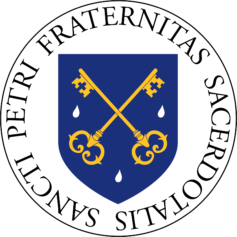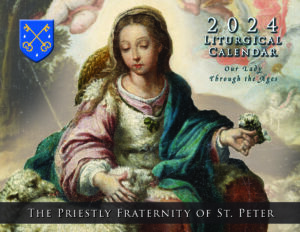Fr. de Malleray: “Digital Communion: A Modern Invention”
We had occasion last week to publish an interview with Fr. Armand de Malleray, FSSP, author of the books X-Ray of the Priest in a Field Hospital and Ego Eimi: It Is I — Falling in Eucharistic Love.
In the same week Father de Malleray also came out with a fascinating piece on Communion in the hand called “Digital Communion: A Modern Invention”, addressing the existence of the practice in antiquity and also drawing an important distinction between receiving the Sacred Host from the hand or the mouth, and taking it with one’s own fingers.
Some excerpts:
Why a new expression, then? Digital Communion, you may think, merely describes Communion on the hand. If this were the case, there would be nothing new to add, since you were told that Communion on the hand had always existed. Communion on the hand, you learnt, was used by early Christians.
So we assumed, like you did, until we read the short but enlightening study by a bishop from Asia. This little book is called Dominus Est: It is the Lord (2008, Newman House Press), by Bishop Athanasius Schneider, the Secretary of the Bishops’ Conference in Kazakhstan. Holding a doctorate in Patristics from Rome, the author studied intensively the Fathers of the Church who tell us how things were done in early Christian centuries. In short, Bishop Schneider proves that never did our Christian forefathers take the Sacred Host with their fingers to put it into their mouth. For a few centuries, in some regions, the Sacred Host was laid by the priest into the right hand of the communicant (her hand veiled if a woman). The right hand was deemed nobler than the left one. At Holy Communion the communicant would bow his head low towards his right palm and would receive the Sacred Host directly with his lips and tongue, without using his fingers at all.
….
Why this? The reason is that using one’s fingers to seize something denotes authority and power over the thing. And this seemed disrespectful toward the Sacred Host who is God Himself. Only the priest celebrant at Mass consumes the Sacred Host from his own fingers, because he has just consecrated the Sacred Species. The celebrant is the only one acting in the Person of Christ as consecrator of the Holy Eucharist. This enables him to act later on as distributor of the same sacrament, by virtue of his identity as “sacerdos”, literally, “the one who gives the sacred”; and in direct fulfilment of Christ’s mandate to his apostles in the multiplication of the loaves prefiguring Holy Communion: “give you them to eat” (Mt 14:16).
….
St John’s Gospel does not describe the institution of the Most Holy Eucharist. Only Sts Matthew, Mark and Luke do so in their three Synoptic Gospels, and St Paul in his first Letter to the Corinthians. Out of eight descriptions then (four for the Host and another four for the Chalice), six do not mention the verb ‘take’ in the Greek original. Only two do so, St Matthew and St Mark, using the same Greek verb ‘labēte’ (imperative, second person plural) which can be translated as ‘take’ or as ‘receive’.[iv] This word occurs seven times in Holy Scripture, always in the New Testament. Significantly, the very same verb is translated as ‘take’ when the intention is sacrilegious; but it is translated as ‘receive’, when the intention is pious. Thus in St John’s Gospel on Good Friday: “When the chief priests, therefore, and the servants, had seen him, they cried out, saying: Crucify him, crucify him. Pilate saith to them: Take him you, and crucify him: for I find no cause in him” (Jn 19:6). But in the next chapter, after the Resurrection: “Peace be to you. As the Father hath sent me, I also send you. When he had said this, he breathed on them; and he said to them: Receive ye the Holy Ghost. Whose sins you shall forgive, they are forgiven them; and whose sins you shall retain, they are retained” (Jn 20:22). No Evangelist, neither St Paul, mentions ‘taking’ for the chalice at the Last Supper. Thus, as we see, six times out of eight (equivalent to 75% of cases), there is no mention of taking Holy Communion, either from the Host or from the Chalice. In the two occasions when the Greek verb ‘labēte’ is used for the Sacred Host, it allows for opposite meanings: take if sacrilegious, or receive if pious.
Read the piece in full here.
September 16, 2020








